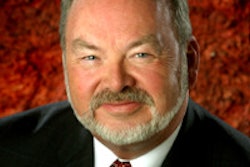CHICAGO - For a long while, the doctor-patient paradigm has been one in which "doctor knows best." But this framework has changed as patients have begun to evaluate healthcare services and providers just as they would any other consumer choice, members of a panel presentation on radiology and consumerism said on Tuesday at the RSNA meeting.
If radiologists know what's good for them -- and their patients -- they will adjust, the group advised.
"Physicians have been culturally indoctrinated into believing they know what's better for patients, which is very different from how other professionals view their clients," said panel co-moderator Dr. Richard Duszak Jr., CEO of the American College of Radiology's (ACR) Harvey L. Neiman Health Policy Institute. "The idea of consumerism bothers physicians because it [clashes with] this cultural indoctrination. But 'consumers' are really just smart patients: informed, engaged, and realistic."
The panel included industry, patient advocacy, benefits management, and cancer care representatives who discussed the topic from a range of viewpoints. But all agreed that the practice of radiology going forward will not be "business as usual."
"Consumers are beginning to make healthcare decisions just as they make other purchase decisions in their lives, considering what services are available, how much they cost, and their quality, convenience and accessibility," said Debra Richman, senior vice president of market research firm Harris Interactive in New York City. "The increasing shift of healthcare costs to patients -- so that they have to take more financial responsibility for their care -- is strengthening the emerging class of the healthcare consumer."
The rise of patient advocacy, 'concierge' care
The patient-as-consumer paradigm generates a need for advocacy groups and a desire for a flexible healthcare market. Patients do get denied access to necessary imaging and need support to gain it, according to panel member Dr. Nancy Davenport-Ennis, chair and co-founder of the Patient Advocate Foundation (PAF) and president and CEO of PAF's policy organization, the National Patient Advocate Foundation (NPAF). PAF helps remove healthcare access barriers for people with chronic, debilitating, or life-threatening illness; with data collected from PAF, NPAF testifies before Congress about these barriers.
"Seventy percent of the people we serve are cancer patients," Davenport-Ennis said. "The success of their treatment, staging [and follow-up] is dependent on diagnostic imaging services, and yet our data show routine denial of these services."
In addition to advocacy organizations, when faced with access-to-care barriers consumers are turning to "concierge" services like those offered by the Cancer Treatment Centers of America (CTCA), a network of independent facilities that provide one-stop comprehensive care.
Just as they do with other consumer choices, patients should be able to make their own decisions, CTCA president and CEO Stephen Bonner told session attendees.
"How can we tell intelligent human beings that they're not entitled to [certain services]? It's un-American," Bonner said. "No other industry operates that way. The data show that if you give people good information, they will make smart decisions. Our patients value the opportunity to understand their care; to sit down with the radiologist and talk over a study that's been done, so they can work together to decide what to do."
But freedom of choice requires accurate information -- including information about facilities' available services and procedure costs -- especially in this era of healthcare reform. In addition to inflated healthcare spending, there are real problems with performing inappropriate imaging exams, including false positives, incidental findings, and unnecessary radiation exposure, according to panel member Dr. David Soffa, senior vice president of medical affairs for benefits management firm AIM Specialty Health.
"Most consumers are not aware of differences in price or capabilities between facilities," Soffa said. "[At AIM] we help deliver health plans, employers, providers, and consumers the proven value and peace of mind that comes from applying evidence-based clinical guidelines to support better decision-making."
Value, not volume
Radiology has long been an insular community, said panel co-moderator Christine Hughes, advocacy research leader of GE Healthcare's Healthcare Economics team.
"Historically, radiologists have managed a physician-to-physician relationship -- they've been the invisible heroes in the patient-care cycle," Hughes said. "But it's time for radiologists to put a face on radiology. Remember that you provide 'credence goods' [both direct and indirect benefits to patients, rather than solely concrete services such as interpretation]."
Whereas the volume of studies read defined a radiologist's success in previous decades, now it's the value that radiologists can bring to the whole patient healthcare experience, according to Duszak: Doctors just aren't at the center of the equation anymore.
"We need to get out of the concept of a transactional delivery of services, and focus on the coordinated delivery of meaningful, longitudinal care," he told session attendees. "Smart patients want more than just healthcare, they want value, and smart physicians will provide both."




















